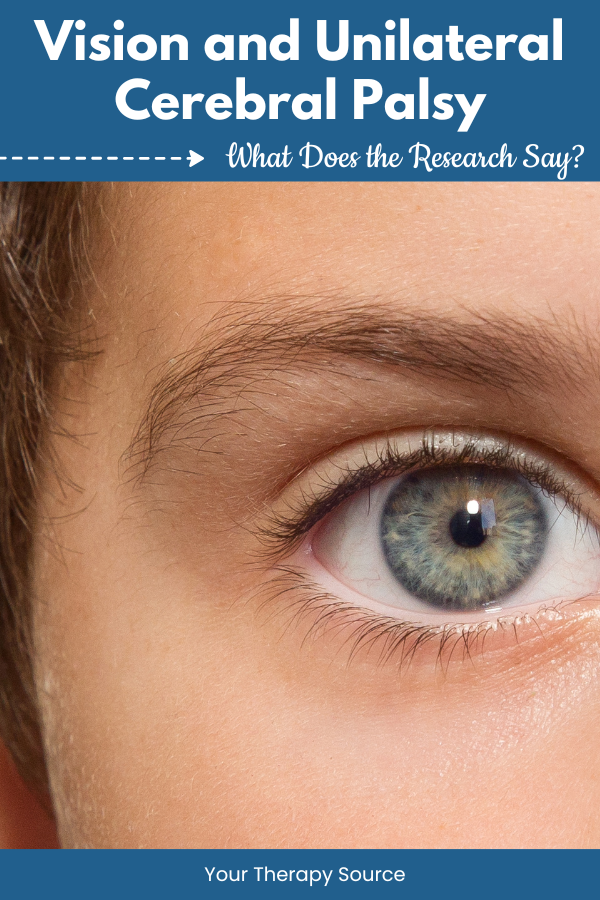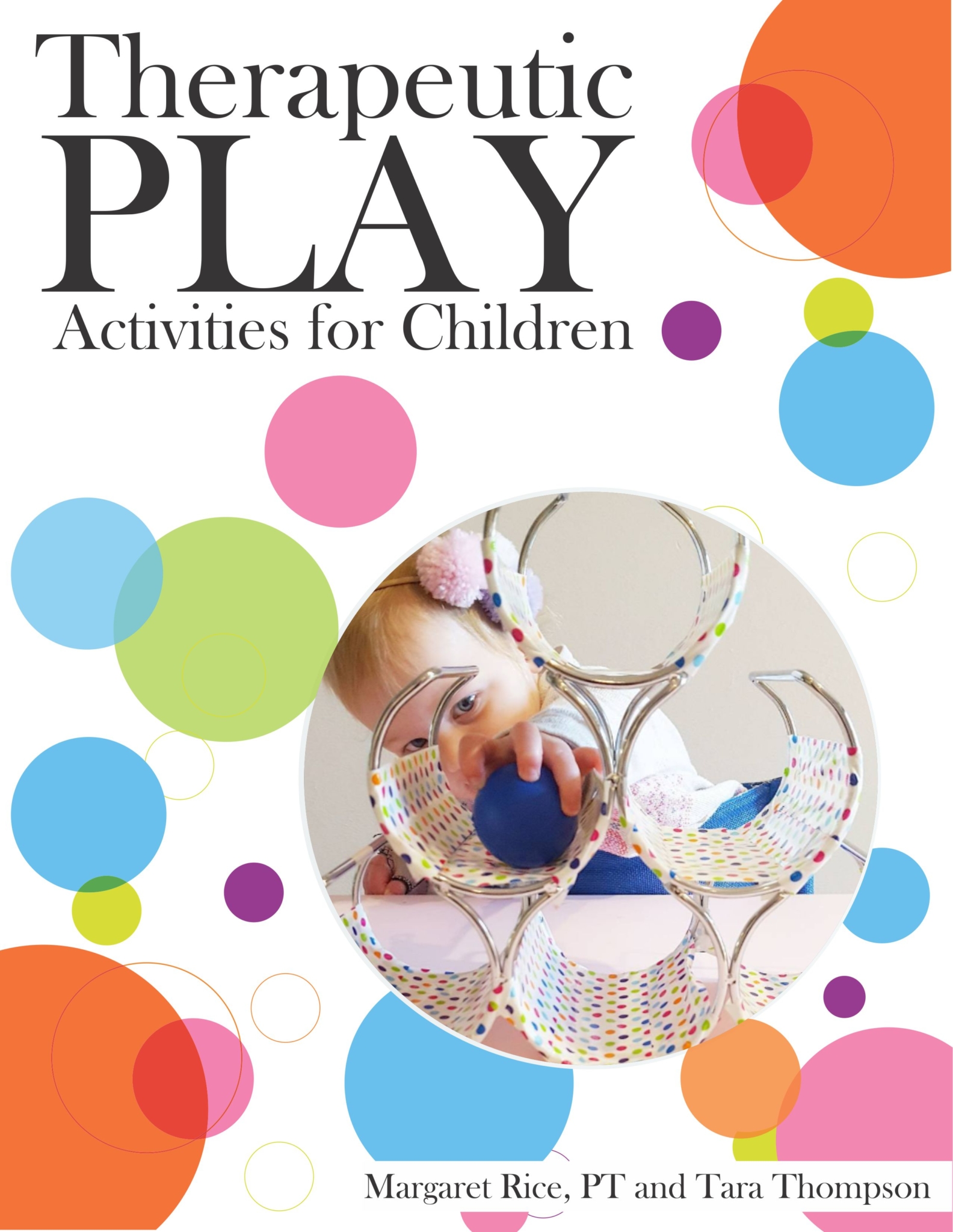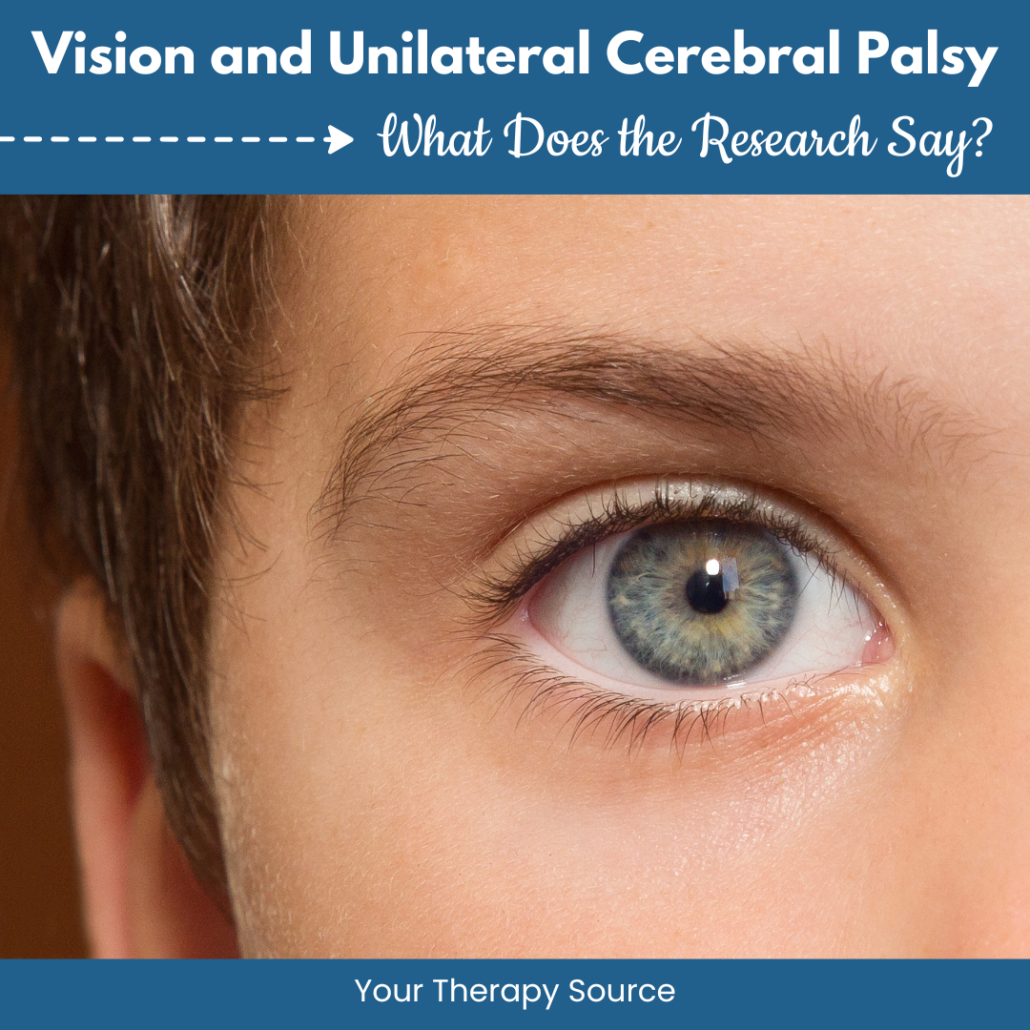Vision and Unilateral Cerebral Palsy
Unilateral cerebral palsy (CP) is a motor disability that impacts one side of the body. For children with this condition, challenges often extend beyond motor skills, affecting their visual and perceptual functions. Understanding these visual difficulties is crucial for healthcare providers, educators, and parents working with these children. Learn more about vision and unilateral cerebral palsy from the research by Crotti et al. (2024). It provides practical insights for those supporting children with unilateral CP.

Understanding Visual Impairments in Unilateral Cerebral Palsy
Children with unilateral CP frequently experience difficulties in various aspects of vision. These challenges can influence their ability to engage in daily activities and impact their quality of life. The research compared the visual and perceptual abilities of 50 children with unilateral CP (aged 7 to 15 years) to those of neurotypical peers. These findings underline the importance of assessing visual functions in children with unilateral CP to better tailor therapeutic interventions. Key findings include:
- 3D Perception Challenges: Children with left unilateral CP showed significant struggles with perceiving three-dimensional images.
- Figure Recognition and Copying: Both left and right unilateral CP groups scored lower on tasks requiring figure recognition and image copying.
- Visual Function and Everyday Activities: Children with poorer 3D perception and figure recognition reported less interest in activities and higher anxiety levels in daily life.

Therapeutic Play Activities for Children
Key Visual Tests Used
For children with CP, parents also completed questionnaires on their child’s functional vision in everyday settings, adding valuable insights into how these visual functions translate to real-world scenarios. The study utilized specific tests to evaluate different aspects of visual and perceptual functions, including:
- Fine Detail Vision: Measuring the ability to see small details.
- 3D Image Perception: Testing depth and spatial understanding.
- Figure Recognition: Assessing the capacity to identify shapes among various options.
- Vision-Motor Integration: Observing how children combine vision with motor skills in tasks like copying images.
Implications for Therapy and Education
The study highlights the need for a multidisciplinary approach to address visual impairments in children with unilateral CP. Here are some strategies and recommendations:
For Therapists:
- Integrate Visual Skills Training: Include exercises that improve 3D perception, figure recognition, and vision-motor coordination.
- Individualized Assessments: Regularly assess specific visual challenges to adapt therapy goals.
For Educators:
- Adapt Classroom Materials: Use high-contrast visuals and simplified diagrams to support learning.
- Encourage Hands-On Activities: Activities like block-building or puzzles can enhance 3D spatial skills.
For Parents:
- Support Play-Based Learning: Encourage activities that promote both vision and motor skills, such as drawing or playing with textured toys.
- Collaborate with Professionals: Work closely with therapists and teachers to ensure consistency in strategies across environments.
Supporting Functional Vision
Children with unilateral CP benefit from interventions targeting not just visual function but also their confidence and interest in activities. Therapies should aim to reduce anxiety and foster engagement in everyday tasks. Early identification and tailored support can make a significant difference in improving their overall quality of life.
Reference
Crotti, M., Ortibus, E., Mailleux, L., Decraene, L., Kleeren, L., & Itzhak, N. B. (2024). Visual, perceptual functions, and functional vision in children with unilateral cerebral palsy compared to children with neurotypical development. Developmental Medicine & Child Neurology.
Related Posts
- Tactile Function in Children with Cerebral Palsy
Explores tactile registration and perception deficits in children with hemiplegia, emphasizing sensory assessments alongside motor evaluations. - Visual Dysfunction and Cerebral Palsy
Discusses the prevalence of neuro-ophthalmological disorders in children with cerebral palsy and highlights the importance of early visual assessments. - Visual Perceptual Skills and ADLs for Children with Cerebral Palsy
Examines the impact of visual perceptual interventions on visual-motor integration and daily living activities for children with cerebral palsy. - Motor Learning in Children with Unilateral Cerebral Palsy
Investigates explicit and implicit motor learning in children with unilateral CP, offering insights into effective intervention strategies. - Less Affected Hand in Unilateral Cerebral Palsy
Highlights underperformance of the less-affected hand in children with unilateral CP and the need for comprehensive bilateral hand function assessments.



